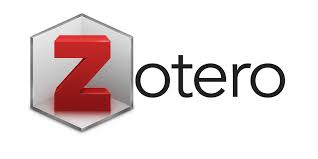Modeling Conic Section Using Hawgent Dynamic Mathematics Software
DOI:
https://doi.org/10.29240/ja.v4i1.4320Keywords:
Mathematics education, Education technology, Hawgent dynamic conic sectionAbstract
Teachers should pay attention to the deep integration of information technology and mathematics courses, so as to achieve the effect that traditional teaching methods are difficult to achieve. Conic section in high school is an important carrier for cultivating students' mathematical literacy, but it is highly abstract and comprehensive, making it a "difficult point" in high school mathematics teaching. Hawgent dynamic mathematics software has powerful dynamic and visual functions, which can effectively assist the teaching of ellipse in high school. The questions to be studied in this paper are: (1) describe how teachers use Hawgent dynamic mathematics software to design learning media when teaching the content of conic section and stimulate students' for knowledge; (2) describe how Hawgent dynamic math software be used in class to help students understand the definition of conic section effectively. This research was used the research method combining ADDIE model and teaching experiment to analyze the class using Hawgent dynamic mathematics software to design learning materials and the class using traditional teaching method. Research sample was 130 high school students. Mathematical software design learning materials, can give students an intuitive presentation of the formation process of the conic, so as to help students effectively understand mathematical concepts and stimulate students' curiosity for knowledge.
Downloads
References
Abdullah, Mir, Shahneaz Shireen, and Akhter Nilufa. (2014). “The Impact of Teacher and Technology in Class Room.†Journal of Education and Practice 5(27):79–83.
Baharuddin, B. (2018). “ADDIE Model Application Promoting Interactive Multimedia.†IOP Conference Series: Materials Science and Engineering 306(1). doi: 10.1088/1757-899X/306/1/012020.
Costley, Kevin C. (2014). “The Positive Effects of Technology on Teaching and Student Learning.†Arkansas Tech University.
Liu, Min, Lucas Horton, Jaejin Lee, Paul Toprac, and Timothy T. Yuen. (2003). “2013_Designing Technology-Enriched Cognitive Tools To Support Young Learners’ Problem Solving.†(1).
Pakdaman-Savoji, Azar, John Cale Nesbit, and Natalia Gajdamaschko. (2019). “The Conceptualisation of Cognitive Tools in Learning and Technology: A Review Cognitive Tools in the History of Psychology and Learning Design Origins in Soviet Psychology.†Australasian Journal of Educational Technology 35(2):35.
Pantazi, Afroditi, and Spyridon Doukakis. (2020). “An Educational Scenario for the Learning of the Conic Section: Studying the Ellipse with the Use of Digital Tools and Elements of Differentiated Instruction and Cognitive Neurosciences.†Advances in Experimental Medicine and Biology 1194:31–40. doi: 10.1007/978-3-030-32622-7_3.
Pekrun, Reinhard, Stephanie Lichtenfeld, Herbert W. Marsh, Kou Murayama, and Thomas Goetz. (2017). “Achievement Emotions and Academic Performance: Longitudinal Models of Reciprocal Effects.†Child Development 88(5):1653–70. doi: 10.1111/cdev.12704.
Pereira, J., T. Jianlan, Tommy Tanu Wijaya, A. Purnama, Hermita N., and M. Tamur. (2021). “Using Hawgent Mathematics Software to Help Primary School Students to Read Clocks.†Journal of Physics: Conference Series 2049. doi: 10.1088/1742-6596/2049/1/012049.
Pereira, Jerito, T. T. Wijaya, Zhou Ying, and Aditya Purnama. (2021). “Learning Points , Lines , and Plane Geometry with Hawgent Dynamic Mathematics Software.†Journal of Physics: Conference Series 1882(1):012057. doi: 10.1088/1742-6596/1882/1/012057.
Yongxing Huang, Jianlan Tang, Jerito Pereira, Chen Jihe, Maximus Tamur, and Hermita Neni. (2021). “Students’ Attitudes Towards Implementation of Hawgent Dynamic Mathematics Software on Curved Surface.†Inomatika 3(2):71–85. doi: 10.35438/inomatika. v3i2.257.
Raposo, Albertina, Anabela Durão, Ana Estradas, and Ivana Ribeiro. (2020). “Technology as a Tool to Enhance Motivation and Learning.†E3S Web of Conferences 171:1–4. doi: 10.1051/e3sconf/202017101011.
Solving, Problem, and Financial Literacy. (2012). PISA 2012 Assessment and Analytical Framework PISA 2012 Assessment and Analytical Framework.
South, Joseph. (2017). “Reimagining the Role of Technology in Education:†Pp. 1–111 in American Institutes for Research under.
Sun, Yingying. (2018). “Study on the Effect of Modern Educational Technology on Quality Education.†Proceedings of the 2017 7th International Conference on Mechatronics, Computer and Education Informationization (MCEI 2017) 75(Mcei):44–47. doi: 10.2991/mcei-17.2017.10.
Syukri, Ahmad, Jefri Marzal, and Muhaimin Muhaimin. (2020). “Constructivism-Based Mathematics Learning Multimedia to Improve Students’ Mathematical Communication Skills.†Indonesian Journal of Science and Mathematics Education 3(2):117–32. doi: 10.24042/ijsme.v3i2.6201.
Tong, Duong Huu, Bui Phuong Uyen, and Ngo Van Anh Quoc. (2021). “The Improvement of 10th Students’ Mathematical Communication Skills through Learning Ellipse Topics.†Heliyon 7(11):e08282. doi: 10.1016/j.heliyon.2021.e08282.
Wijaya, T. T., Tang Jianlan, and Purnama Aditya. (2020). “Developing an Interactive Mathematical Learning Media Based on the TPACK Framework Using the Hawgent Dynamic Mathematics Software.†Pp. 318–28 in Emerging Technologies in Computing. Springer International Publishing.
Downloads
Published
Issue
Section
Citation Check
License
Authors who publish with ARITHMETIC: Academic Journal of Math agree to the following terms:
- Authors retain copyright and grant the journal right of first publication with the work simultaneously licensed under a Creative Commons Attribution-NonCommercial-ShareAlike 4.0 International License (CC BY-NC-SA 4.0) that allows others to share the work with an acknowledgment of the work's authorship and initial publication in this journal.
- Authors are able to enter into separate, additional contractual arrangements for the non-exclusive distribution of the journal's published version of the work (e.g., post it to an institutional repository or publish it in a book), with an acknowledgment of its initial publication in this journal.
- Authors are permitted and encouraged to post their work online (e.g., in institutional repositories or on their website) prior to and during the submission process, as it can lead to productive exchanges, as well as earlier and greater citation of published work (See The Effect of Open Access).







